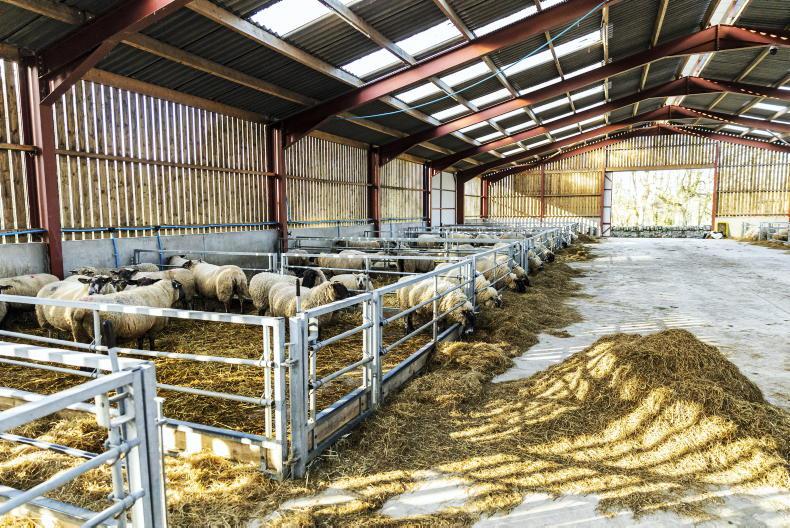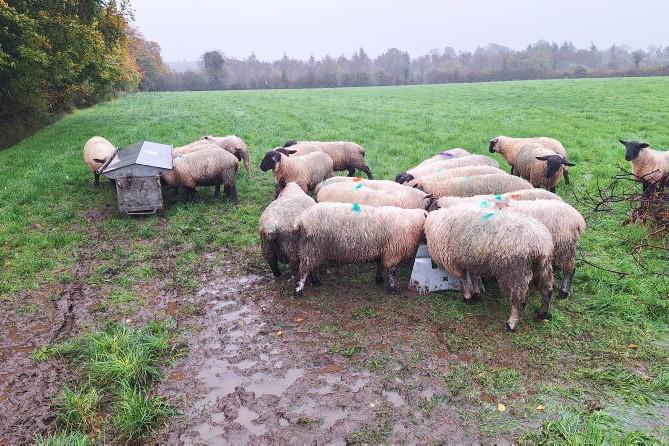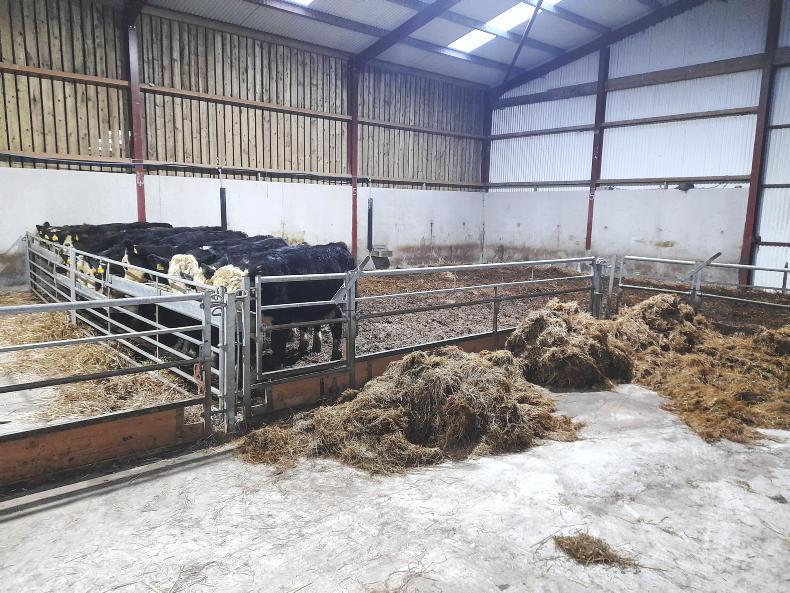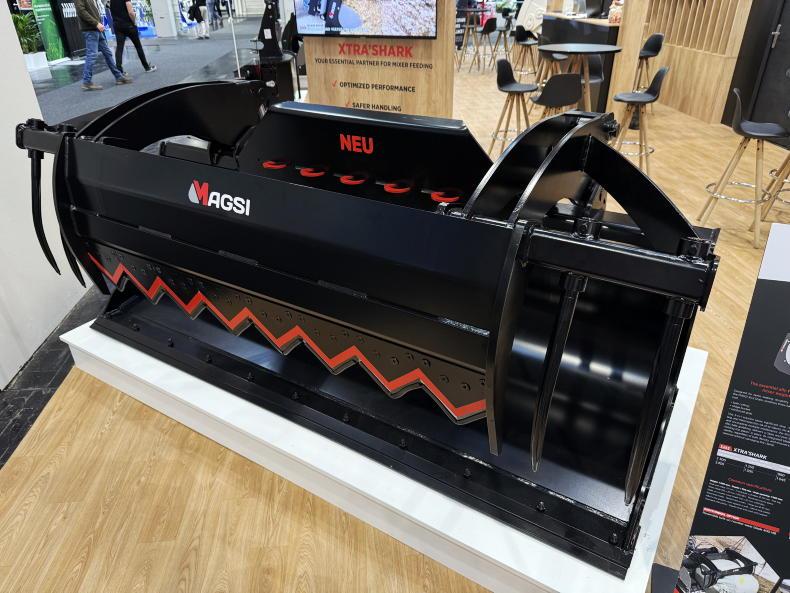The past year has been a challenging one for sheep flocks, with a late spring, drought conditions, a significant escalation in input costs and pressure on prices in the second half of the year affecting producers to varying degrees.
Speaking at last week’s Northern Ireland Sheep Programme webinar Jack Friar, CAFRE beef and sheep adviser, cautioned that management practices in the months ahead will need to be first rate to prevent any carryover of issues from 2022 to 2023.
Jack highlighted a number of areas of significant concern. On many farms, silage harvesting was delayed by two to three weeks and was then saved in less than ideal conditions. This has lowered the average quality by 2% to 3% (0.5-1.0 MJ ME) and also lowered the dry matter. Depending on the quality, this could have significant implications for energy intake from the direct effect of a lower nutritional value and the potential for intake levels to be compromised with wet, poor-quality silage.
This is occurring as some farmers are reporting ewes in poorer body condition and grass reserves depleted earlier than normal. With this in mind, Jack urged farmers to get a representative sample of their forage analysed and repeat this exercise where necessary throughout the housing period. The cost will be easily justified in using this information to formulate winter diets.
The quality of forage available will have a direct effect on the level of concentrate supplementation required in late pregnancy. Table 1 details information presented at the webinar showing a typical late pregnancy feeding programme based on varying quality silage.
As shown, the level of concentrates required was over 140% higher when comparing excellent-quality silage to poor-quality silage, with supplementation required at a much earlier stage and at levels of at least 50% higher. Failing to address poor-quality forage or feeding diets, which do not meet ewe nutritional demands, will have serious consequences for lamb birth weights and colostrum yield and quality. The results of a trial undertaken in Northern Ireland show birth weights in twin litters to be 1.5kg lower in underfed ewe with colostrum yield halved in the first 24 hours post-lambing.
Financial implications
The financial implications of feeding forage of varying quality are detailed in Table 2 Jack outlined that a saving of over €7 per ewe can be achieved from feeding top-quality versus poor-quality silage. This accumulates to a saving of €1,786 per head on a 200-ewe flock.
The potential savings or higher costs faced are amplified by concentrate costs rising by 30% when compared to November 2021 and 50% when compared to November 2020. There is little that can be done now with regard forage quality, but Jack says this message should be in farmers’ minds when putting plans in place for 2023. While small relative to the overall cost of concentrates, there are potential savings that can be made by buying concentrates in bulk rather than small bags, pricing around to get the best deal and avoiding payment terms where possible that will see interest accrue on any credit given.
Jack warned that the importance of ensuring feed ingredients are top-quality should not be lost in the quest to lower costs, as this will end up being a false economy with some lower-priced feeds potentially costing more per unit of energy/protein.
On the latter point of protein, he outlined that there are likely to be higher levels of ingredients such as sunflower and rapeseed used this season given the cost of soya bean meal. While both of these ingredients have a decent crude protein content, it is inferior in quality to soya bean meal, while the energy content is poor in sunflower and average in rapeseed.
Therefore, these feeds should not be primary ingredients in feed mixes, with sunflower in particular a feed to avoid. There may be potential for some farmers to reduce costs by purchasing straight feeds.
Farmers progressing down this route need to ensure they have the means to store and mix feeds adequately and also stay on the right side of the legislation.
Key messages
Analyse forage to allow optimum feeding programmes to be developed. Check ewe condition at every available opportunity and take steps to safeguard condition.Assess feed ingredients critically and do not let a lower price mask inferior quality ingredients.
The past year has been a challenging one for sheep flocks, with a late spring, drought conditions, a significant escalation in input costs and pressure on prices in the second half of the year affecting producers to varying degrees.
Speaking at last week’s Northern Ireland Sheep Programme webinar Jack Friar, CAFRE beef and sheep adviser, cautioned that management practices in the months ahead will need to be first rate to prevent any carryover of issues from 2022 to 2023.
Jack highlighted a number of areas of significant concern. On many farms, silage harvesting was delayed by two to three weeks and was then saved in less than ideal conditions. This has lowered the average quality by 2% to 3% (0.5-1.0 MJ ME) and also lowered the dry matter. Depending on the quality, this could have significant implications for energy intake from the direct effect of a lower nutritional value and the potential for intake levels to be compromised with wet, poor-quality silage.
This is occurring as some farmers are reporting ewes in poorer body condition and grass reserves depleted earlier than normal. With this in mind, Jack urged farmers to get a representative sample of their forage analysed and repeat this exercise where necessary throughout the housing period. The cost will be easily justified in using this information to formulate winter diets.
The quality of forage available will have a direct effect on the level of concentrate supplementation required in late pregnancy. Table 1 details information presented at the webinar showing a typical late pregnancy feeding programme based on varying quality silage.
As shown, the level of concentrates required was over 140% higher when comparing excellent-quality silage to poor-quality silage, with supplementation required at a much earlier stage and at levels of at least 50% higher. Failing to address poor-quality forage or feeding diets, which do not meet ewe nutritional demands, will have serious consequences for lamb birth weights and colostrum yield and quality. The results of a trial undertaken in Northern Ireland show birth weights in twin litters to be 1.5kg lower in underfed ewe with colostrum yield halved in the first 24 hours post-lambing.
Financial implications
The financial implications of feeding forage of varying quality are detailed in Table 2 Jack outlined that a saving of over €7 per ewe can be achieved from feeding top-quality versus poor-quality silage. This accumulates to a saving of €1,786 per head on a 200-ewe flock.
The potential savings or higher costs faced are amplified by concentrate costs rising by 30% when compared to November 2021 and 50% when compared to November 2020. There is little that can be done now with regard forage quality, but Jack says this message should be in farmers’ minds when putting plans in place for 2023. While small relative to the overall cost of concentrates, there are potential savings that can be made by buying concentrates in bulk rather than small bags, pricing around to get the best deal and avoiding payment terms where possible that will see interest accrue on any credit given.
Jack warned that the importance of ensuring feed ingredients are top-quality should not be lost in the quest to lower costs, as this will end up being a false economy with some lower-priced feeds potentially costing more per unit of energy/protein.
On the latter point of protein, he outlined that there are likely to be higher levels of ingredients such as sunflower and rapeseed used this season given the cost of soya bean meal. While both of these ingredients have a decent crude protein content, it is inferior in quality to soya bean meal, while the energy content is poor in sunflower and average in rapeseed.
Therefore, these feeds should not be primary ingredients in feed mixes, with sunflower in particular a feed to avoid. There may be potential for some farmers to reduce costs by purchasing straight feeds.
Farmers progressing down this route need to ensure they have the means to store and mix feeds adequately and also stay on the right side of the legislation.
Key messages
Analyse forage to allow optimum feeding programmes to be developed. Check ewe condition at every available opportunity and take steps to safeguard condition.Assess feed ingredients critically and do not let a lower price mask inferior quality ingredients. 









SHARING OPTIONS